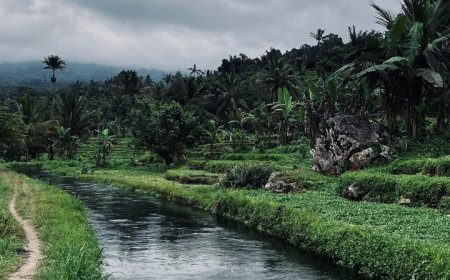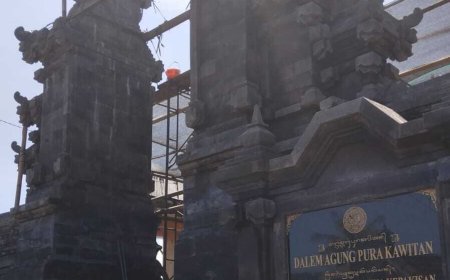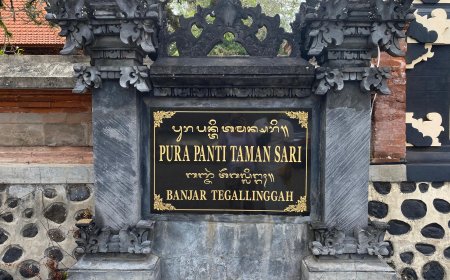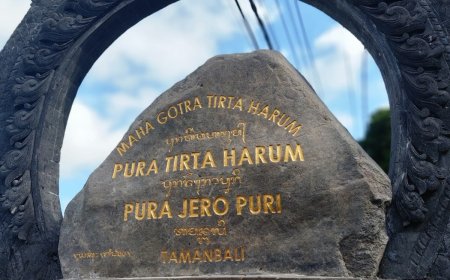Gunung Sari Temple of Bhujangga Waisnawa: Sacredness That Blends with the Mountain Landscape
Gunung Sari Temple of Bhujangga Waisnawa is one of the sacred temples in Bali, which has its own uniqueness in terms of both history and geography. Located in the lush mountainous area, this temple not only serves as a place of worship for Hindus but also offers breathtaking natural scenery.
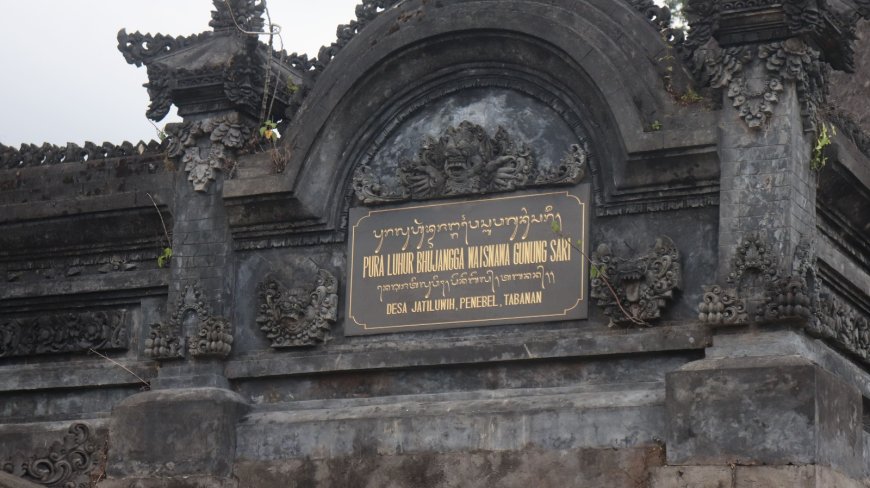
Amidst the coolness of the mountains in Jatiluwih Village, Penebel District, Tabanan Regency, stands a temple that holds sacred and historical significance for the Hindu community, namely Pura Luhur Bhujangga Waisnawa Gunung Sari or Gunung Sari Temple of Bhujangga Waisnawa. This temple not only serves as a sacred site for conducting various religious rituals but also symbolizes harmony between humans, nature, and spirituality. With its majestic architecture and stunning natural landscape, Gunung Sari Temple of Bhujangga Waisnawa offers a spiritual experience that connects its visitors with the power of nature and the sanctity of Hindu tradition.
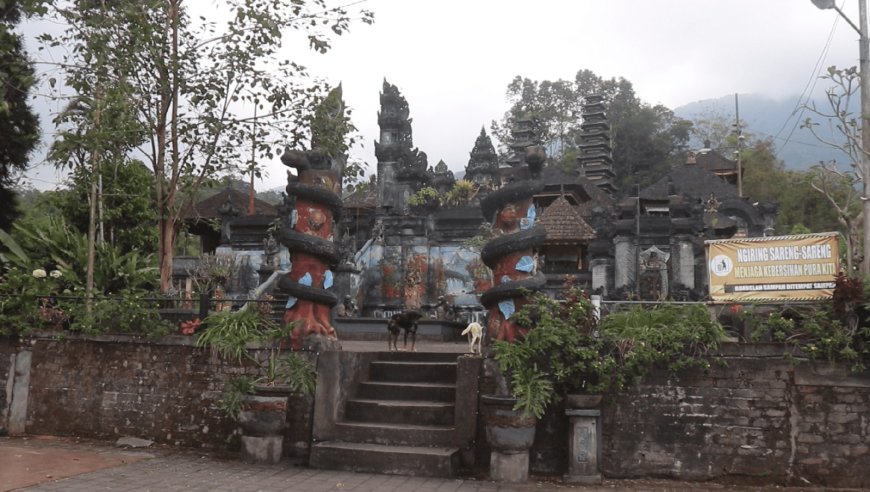
Nista Mandala of Gunung Sari Temple (Source: Private Collection)
History and Function of Gunung Sari Temple of Bhujangga Waisnawa
Gunung Sari Temple of Bhujangga Waisnawa is believed to be one of the temples built to honor and worship the ancestors and Hindu spiritual figures in Bali, particularly the Bhujangga Waisnawa lineage. Bhujangga Waisnawa is one of the key sects of Hinduism in Bali, playing an important role in spreading the teachings of the Vedas and establishing various sacred sites. This temple symbolizes purity, a place for meditation, and a site for the worship of Ida Sang Hyang Widhi Wasa, in His manifestation as Vishnu, the Protector.
According to the temple priest, this temple has existed for centuries, although the exact date of its establishment remains unclear. However, he narrates that this temple was one of the ancient sites used by ancestors and Hindu religious leaders for spiritual enlightenment through ascetic practices.
Initially, the temple consisted of a simple shrine shaped like a lotus (padma), surrounded by natural elements such as stone fences and trees like Temen and Sudhamala. Over time, the local elders and Bhujangga Waisnawa community, with great dedication, expanded the temple area, leading to the structure we see today.
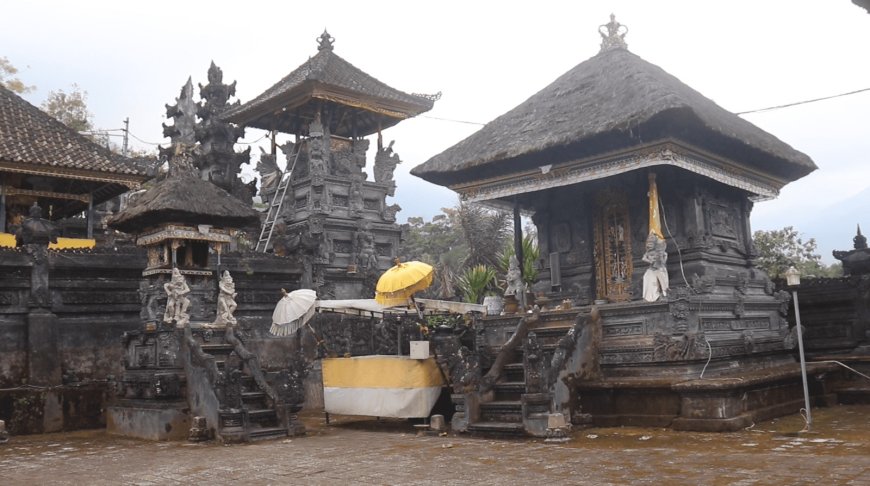
Madya Mandala of Gunung Sari Temple (Source: Private Collection)
Unique Landscape and Sacredness of Nature
One of the main attractions of Pura Luhur Bhujangga Waisnawa Gunung Sari is its location amidst the mountains. The natural scenery around the temple is truly breathtaking, with dense forests and towering mountains surrounding the area. This beautiful landscape creates a serene and peaceful atmosphere, reinforcing the temple’s aura of purity and spirituality.
The presence of the temple in this pristine natural environment offers not only a deep religious experience for Hindu devotees, but also fosters a harmonious connection between humans, nature, and the Creator. The sacredness of Pura Luhur Bhujangga Waisnawa Gunung Sari is further enhanced by the presence of various natural elements, such as a nearby flowing spring, lush trees, and the cool mountain air. All these elements come together to create an atmosphere that supports contemplation and spiritual connection.
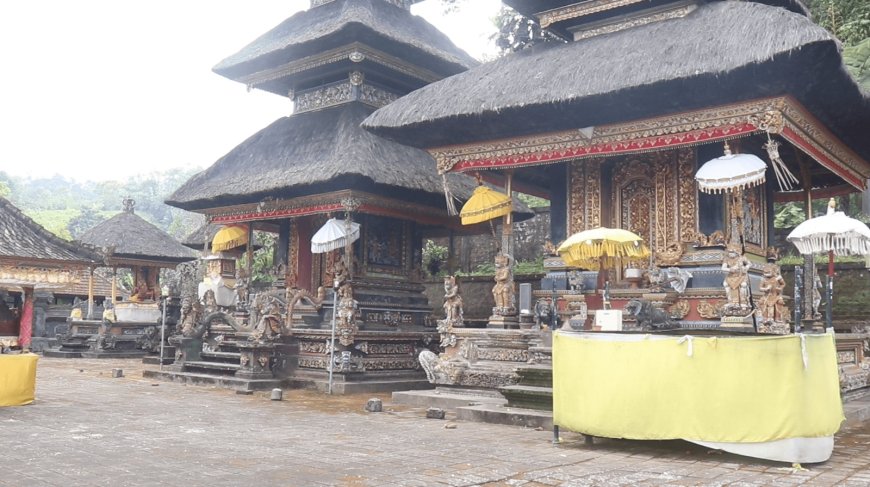
Utama Mandala of Gunung Sari Temple (Source: Private Collection)
Architectural Beauty and Landscape
Gunung Sari Temple of Bhujangga Waisnawa not only provides a profound spiritual experience but also showcases architectural beauty that perfectly blends with the mountainous landscape. The temple is built following the concept of Tri Mandala, which divides the temple area into three sections based on levels of sacredness. The outermost part, or Nista Mandala, serves as a preparation area and is often used for general activities before entering the more sacred zones. The middle part, Madya Mandala, is the formal area for conducting religious rituals. This section includes important structures such as the Gedong Kawitan and Bale Agung, as well as pelinggih Hyang Guru, which is dedicated to the spiritual teachers who enlighten the devotees. The innermost and most sacred area, Utama Mandala, is the main center of worship within the temple. Here, two primary Meru towers, namely Meru Tumpang Pitu and Meru Tumpang Solas, serve as the highest places of worship for the Gods and ancestors.
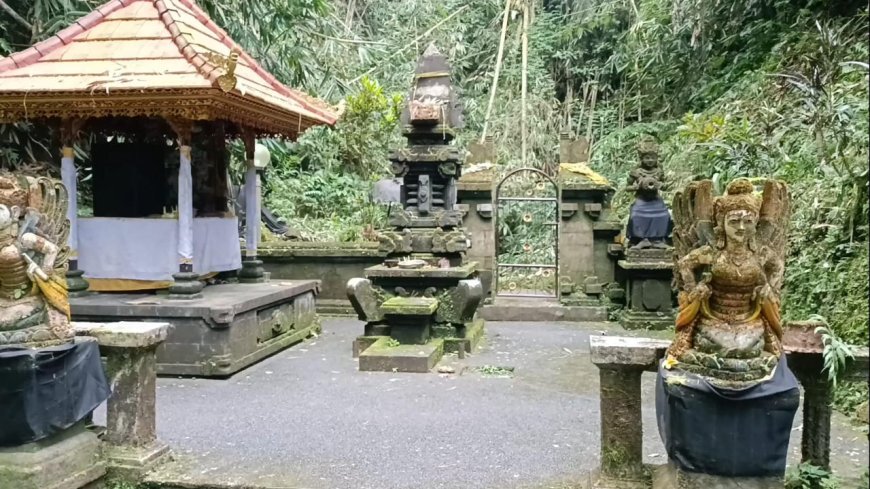
Beji Temple in Gunung Sari Area (Source: Private Collection)
Additionally, the temple also includes Beji Temple, a sacred area used for spiritual cleansing through water. Here, a holy pond is used for purification ceremonies, especially during pujawali (a ceremonial celebration held to commemorate the anniversary of a temple in Balinese Hindu tradition), when statues and sacred items are ritually cleansed. The purification process in Beji Temple is considered a crucial first step in achieving spiritual purity before conducting larger rituals in the temple's main area.
The architectural splendor of this temple is further enriched by the surrounding natural landscape. Located in a highland area, Gunung Sari Temple is enveloped by greenery, with the cool mountain air making it an ideal place for meditation and self-reflection. The sounds of nature, such as the chirping of birds and the mountain breeze, enhance the peaceful and sacred atmosphere. This combination of grand traditional architecture and harmony with nature is what makes Gunung Sari Temple of Bhujangga Waisnawa so special, not only as a place of worship but also as a cultural site that is deeply intertwined with the beauty of the natural environment.




















